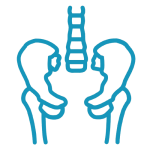National Vascular Physicians
Minimally invasive, non-surgical vascular treatments conveniently located in National Harbor, MD, Rockville, MD & Roanoke, VA.
Better service for patients and referring doctors
Most treatments are performed in our center using minimally invasive techniques, so that you can go home the same day and can get back to your life quickly. Our physicians can also perform procedures in hospitals when a hospital setting is required.
Communication and transparency are key at NVP. We partner with you and your healthcare team throughout your entire medical journey – from start to finish – and offer treatment options uniquely tailored to you.
No more frustration trying to schedule an appointment or waiting for information. We can put you in touch with one of our specialists quickly – sometimes even the same day. Contact us today or schedule your appointment and see what we are all about »
Our Vascular Physicians
National Vascular Physicians (NVP) offers revolutionary minimally invasive, non-surgical treatment options performed by our award-winning physicians in a convenient outpatient setting outfitted with the latest medical equipment.
Our board-certified Vascular and Interventional Physicians partner with you and your healthcare team throughout your entire medical journey – from start to finish – and offer treatment options uniquely tailored to you. Unlike other providers in the field, our doctors are fellowship-trained in interventional radiology, and each have more than a decade of clinical experience performing minimally invasive procedures.
Contact Us today for your appointment and see what we are all about.

National Vascular Physicians: Dr. Adam Guyer, Dr. Alex Kim, Dr. Emmett Lynskey, Dr. Avinash Pillutla


Vascular Conditions & Treatments
Areas of Vascular Care
National Vascular Physicians (NVP) offers patients the highest quality evidence-based vascular and interventional services based on the leading-edge research and widely accepted scientific techniques.












